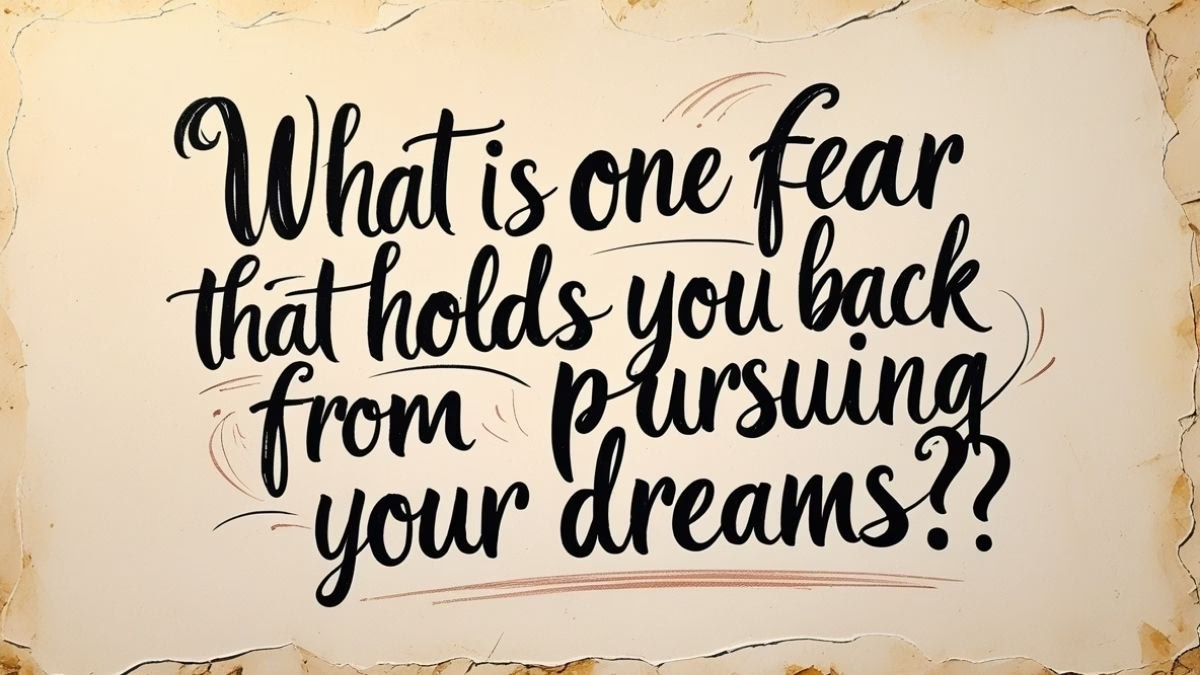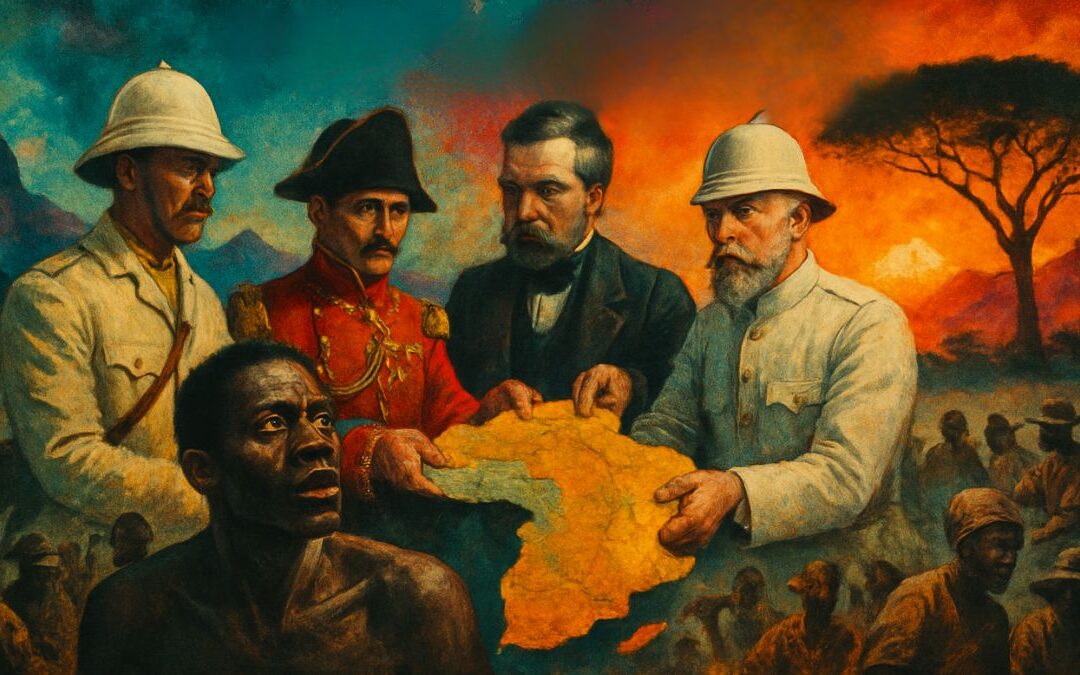SparkCast Episode
The SparkCast episode is not just a reading of the article below; it’s a lively discussion based on the topic of the article, so you don’t want to miss it!
[ppp_patron_only level=5]
Taming Your Amygdala_ Overcoming Fear’s Grip Transcript: Click to Open
Taming Your Amygdala Overcoming Fear’s Grip
Okay, think about this for a second. What’s that one big thing, that thing you’d really do, you know, if only, if only you weren’t so scared? Right. Maybe it’s finally launching that business you dream about, or asking that person out, or even just learning a new skill, but something inside just slams on the brakes.
Yeah, and that’s something, it makes you wonder, doesn’t it? Is that feeling a, well, a rational, considered decision? Or is it maybe your brain’s really ancient alarm system mistaking a totally modern challenge for, I don’t know, a saber-toothed tiger? It feels like that sometimes. Today, we are diving deep into the specific part of your brain that actually orchestrates this fear, and maybe more importantly, how you can genuinely train it, train it to work with you, not always against you. Welcome to a new Sparkcast from English Plus Podcast.
We’re going to unpack the science behind fear today, really focusing on what holds so many of us back from those if-only dreams. Yeah, our goal here, really, is to give you a kind of shortcut, a way to understand not just where fear originates, but crucially, how you can start to work with it to maybe transform your relationship with this honestly incredibly powerful emotion. So you know that sentence, the one where a dream feels like it’s held hostage by a feeling? If only I wasn’t so scared of failing, I’d start my own business.
Or, if only I wasn’t so afraid of rejection, I’d finally ask them out. Exactly. Take a moment right now.
What’s your personal version of that sentence? What’s your if-only? It’s pretty fascinating, isn’t it, how incredibly unique our individual dreams can be, but how strikingly similar our fears often are underneath it all. The material we’ve looked into really highlights the big ones. The classic fear of failure, the sting of potential rejection, fear of the unknown, which is huge, and even that sort of nagging fear of just not being good enough.
That thing people call imposter syndrome. Imposter syndrome, yeah, that’s a big one. So what do these insights suggest is really at the root of these common dragons, these things holding us back? Well, it seems they’re all pretty deeply rooted in our fundamental human need for safety and belonging.
It makes sense from an evolutionary standpoint, right? Your brain is basically wired to see social failures or being rejected as a direct threat, a threat to survival, almost like being kicked out of the tribe back in the day. Wow, okay, so it’s that primal. It can feel that primal.
Which raises a really important question for you listening right now. How much does that fear, the fear of what other people might think, how much does it really influence your decisions day to day? That’s a tough question. It is, and is that fear actually, you know, serving you? Or is it maybe limiting you without you even realizing it? Okay, this is where it gets really interesting, neurologically speaking.
Deep inside your brain, right, there’s this tiny kind of almond-shaped cluster of neurons. It’s called the amygdala. You can almost think of it as your brain’s super vigilant, maybe slightly paranoid body part.
That’s a good way to put it. And its primary job, its absolute non-negotiable function, is survival. Pure and simple.
It’s constantly scanning your surroundings, your environment, looking for threats, and when it thinks it spots one, boom, full-blown alarm. It triggers that classic fight, flight, or freeze response we’ve all heard about. Yeah, you feel it physically.
Totally. Imagine you actually are facing some kind of dangerous animal. This system is incredible.
It floods your body with adrenaline and cortisol, sharpens your focus like a laser, and gets you ready to survive, whatever it takes. Okay, so it sounds amazingly efficient for, like, actual physical danger. But how does this really old primal system handle the more complex, sort of nuanced fears of modern life, you know, the social tigers, the emotional tigers we face? Does our brain really tell the difference? That’s the catch.
It often doesn’t. Not very well, anyway. To our ancient brain wiring, the threat of public speaking, for example, can feel just as terrifying physically as being attacked.
Really? Yeah. The fear of getting rejected for a job or maybe asking someone out, it can trigger the exact same internal alarm bells. Your heart starts pounding.
Your palms get sweaty. Maybe your mind goes completely blank. Yeah, been there.
We all have. It’s your survival instinct kicking in, but at kind of the wrong time. It’s reacting to a modern fear with a really ancient primal tool.
And something else that’s important here is this idea of anticipatory fear. Anticipatory fear. What’s that? It means your brain doesn’t just react to threats that are happening right now.
It can get stuck in a loop, fearing things that haven’t even happened yet, maybe things that will never happen. Oh, like worrying about a presentation weeks in advance. Exactly.
The amygdala struggles to tell the difference between that imagined future threat and a real, immediate danger, which is why we often feel sort of paralyzed or anxious long before the actual event even takes place. That’s often the fear that really holds you back. Okay, so this sounds a bit bleak.
Are we just like slaves to this panicky amygdala then? Uh-huh. No. The good news is absolutely not.
Thankfully, we have another part of our brain, a more recently evolved part, the prefrontal cortex, often called the PFC. The PFC. Okay, what’s its role? Think of the PFC as your brain’s CEO.
It’s the center for rational thought, for planning, for impulse control, for weighing consequences. Self-control, basically. The grown-up in the room.
Pretty much. And the key to managing fear, as some of the material like the article explains, is really about strengthening the connection, the communication pathway, between your rational prefrontal cortex and your more emotional amygdala. Okay, strengthen the connection.
So if the amygdala is screaming panic, what exactly can the prefrontal cortex do in that moment? How does it actually step in and calm things down? What does that interplay look like? Well, it tries to act like that calm, collected leader stepping in to override the, let’s say, overzealous security guard. So when the amygdala screams, danger, panic now, your prefrontal cortex can ideally step in and say, hey, hang on a second. Let’s actually look at this rationally.
This isn’t a tiger chasing us. It’s just an important email we need to send. Or it’s a job interview.
Or we’re learning something new. It basically says we are actually safe right now. It’s about creating that conscious loop, that circuit breaker, that says essentially, amygdala, I hear your warning.
Thanks for trying to protect me. But I’m in charge of the response here. I like that.
I hear you, but I’m in charge. So practically speaking then, what does this mean for us? How do we actually do that? How do we strengthen that connection and start, you know, taming our personal dragons? Right, the actionable stuff. Well, the article we looked at outlines three really powerful ways to start doing this.
They’re quite direct, actually. Okay, let’s hear them. First, name it to tame it.
It sounds simple, but just acknowledging and labeling the fear can make a huge difference. Saying out loud or even just to yourself, okay, I’m feeling the fear of failure right now or this is fear of rejection, that simple act can actually help activate your prefrontal cortex. Just naming it.
Just naming it. It starts to bring the fear out of the shadows, out of the purely emotional realm and into the light of your conscious awareness. It gives your rational brain something to work with instead of letting the fear just run wild subconsciously.
Okay, name it to tame it. Got it. What’s second? Second, take tiny manageable steps.
Fear absolutely loves to feel overwhelming. It wants you to see the whole scary mountain at once. Yeah, paralysis by analysis almost.
Exactly. So the trick is to break your scary goal down into ridiculously small actions. Almost laughably small sometimes.
So if you want to write a book, maybe your only goal for today is literally just to write one single sentence. One sentence. One sentence.
Or open the document. Whatever feels manageable. You know, that idea of tiny steps really resonates.
I remember feeling completely swamped by this huge project once, just seeing this mountain of tasks and breaking it down into literally one sentence, action items, things I could tick off quickly. It suddenly made it feel, well, possible. Does the article mention the immediate reward neurologically? Does completing even tiny steps reinforce the behavior? Oh, absolutely.
That’s a key part of it. Each time you take one of those small steps and survive, you get a little hit of dopamine. That’s the reward chemical.
Oh, the brain likes that. The brain loves that. It reinforces the action, builds a sense of accomplishment.
However small. And it starts signaling to your brain, hey, see, this path is actually safe. We did the thing and nothing terrible happened.
It builds a positive feedback loop that directly counters the fear loop. Okay, that makes a lot of sense. Name it.
Tiny steps. What’s the third one? Third, practice mindfulness and deep breathing. This one is like a direct biological hack.
A hack. How so? Because deep, slow breathing directly tells your nervous system to switch gears. To shift from that fight or flight sympathetic nervous system response to the rest and digest parasympathetic state.
So it physically calms you down. Exactly. It calms the physical symptoms of fear, the racing heart, the shallow breathing.
And when your body starts to calm down, your mind tends to follow. It helps break that cycle of physical panic, feeding mental panic, and vice versa. Wow.
So these aren’t just like abstract psychological ideas. They’re actual direct ways to influence your brain chemistry and hopefully override those ancient alarm bells when they’re ringing unnecessarily. Precisely.
You’re actively intervening in the process. It feels important to remember though, right? The goal isn’t really to eliminate fear entirely. I mean, fear is vital sometimes.
It keeps us safe from actual danger. That’s absolutely crucial. Yes.
The goal isn’t fearlessness. It’s about changing your relationship with fear. You know, courage isn’t really the absence of fear, is it? It’s more about acting in spite of the fear.
Acting despite it. Yeah. Think of it like this.
You want your prefrontal cortex, the part of you that holds your dreams, your values, your long-term goals. You want that part to be the one driving the car. Okay.
Your amygdala, your fear center. It can sit in the passenger seat. It can shout warnings if it wants to.
Watch out. Scary thing ahead. But you, the driver, you hear it.
You acknowledge it. Maybe you say, thanks for the warning. But you choose not to let it grab the steering wheel and swerve off the road.
I love that metaphor, the amygdala in the passenger seat not driving. It’s powerful. But it does raise an interesting point.
You said acting in spite of fear. Is fear always something we should just manage or overcome? Does the article touch on times when fear might actually be serving a, you know, a legitimate protective role, maybe stopping us from being truly reckless or pushing ourselves too far in an unhealthy way? That is such a great point, and yes, absolutely. While we’re mostly talking here about managing irrational fear, the kind that holds you back from growth, from reasonable risks, healthy fear is crucial.
We need it. The insights definitely remind us that the goal isn’t to become some kind of fearless robot. It’s about discernment.
It’s about learning to tell the difference. Is this a legitimate warning signal from my amygdala about real danger? Or is this just my bodyguard overreacting to something that’s actually safe, albeit challenging? So it’s about calibrating the alarm system, not dismantling it. Exactly.
Calibrating, not eliminating. And actually, there’s a fantastic kind of fun technique highlighted in the article for working with this. It’s called the speaking challenge.
Speaking challenge. OK, intriguing. Yeah.
It encourages you to actually personify your fear. Give it a name, maybe even a bit of a personality. Something silly often works well, like, I don’t know, Bartholomew the Warrior.
Bartholomew. Bartholomew. OK, so you give your fear a silly name.
Then what? Then you actually have a short, maybe one-minute conversation with it out loud. Wait, you’re literally talking to your fear like, hello, Bartholomew. How does that work? Sounds a bit weird.
It sounds weird, but it can be surprisingly powerful. The idea is first you acknowledge it. OK, Bartholomew, I see you’re here.
I know you’re telling me this job interview is absolutely terrifying. OK, acknowledge. Then you maybe thank it for its concern.
Genuinely. Look, I know you’re just trying to protect me. That’s your job.
Thanks for looking out for me. Right, acknowledging its intention. Precisely.
And then, crucially, you set a boundary and state your intention. But Bartholomew, I’m going to do this anyway. I prepared for this interview, and it’s important to me.
So you can come along for the ride if you want. You can sit in the passenger seat. But I’m the one driving.
I’m in charge here. Wow. OK.
It does sound a bit silly saying it out loud. But I can see how that act of separating yourself from the emotion, giving it a name, talking to it, instead of just being it, that could actually give you some perspective and power back. Exactly.
It externalizes it a bit. It creates that little bit of space between you and the feeling, allowing your prefrontal cortex to step in more easily. It’s a way to reclaim your agency.
This whole deep dive, it really makes you think, doesn’t it, about how much potential, how many dreams might be kind of locked away just because of these internal alarms going off maybe at the wrong times. Oh, absolutely. It’s huge.
If we connect this to the bigger picture, it really drives home the idea that our greatest limitations often aren’t external circumstances, are they? They’re internal. They’re these feared we haven’t quite learned how to navigate yet. Yeah.
So maybe let’s leave you, the listener, with a final thought, something sparked by the material we explored today. If you genuinely knew deep down that you could not fail, what’s the very first thing you would do? Just think about that. What does your answer to that question reveal about your deepest desires, the things that fear might be currently holding captive? Something to ponder.
Definitely. And this was another Sparkcast from English Plus Podcast. Don’t forget to check out the full article on our website, englishpluspodcast.com, for more details.
Thank you for listening. Stay curious and never stop learning. We’ll see you in the next episode.
[/ppp_patron_only]
What’s Your “If Only”?
What’s that one thing you’d do “if only”? “If only I wasn’t so scared of failure, I’d start my own business.” “If only I wasn’t so afraid of rejection, I’d ask them out.” “If only I wasn’t terrified of looking stupid, I’d learn to paint.” We all have that sentence, that dream that’s being held hostage by a feeling. It’s the one fear that holds you back, the personal dragon that guards the treasure you most desire. Today, let’s take a look inside our own heads to understand where this dragon comes from and how we can learn to work with it.
Meet Your Brain’s Bodyguard: The Amygdala
Deep inside your brain, in the temporal lobe, are two little almond-shaped clusters of neurons called the amygdala. Think of the amygdala as your brain’s hyper-vigilant, slightly paranoid bodyguard. Its primary job is survival. It’s constantly scanning your environment for threats, and when it spots one, it sounds the alarm, triggering the classic “fight, flight, or freeze” response. This system is amazing when you’re face-to-face with a saber-toothed tiger. It floods your body with adrenaline and cortisol, sharpens your focus, and prepares you to survive.
When the Bodyguard Gets It Wrong
The problem is, your amygdala isn’t great at telling the difference between a real, life-threatening tiger and a “social” or “emotional” tiger. To your ancient brain wiring, the threat of public speaking can feel just as terrifying as the threat of being eaten. The fear of getting rejected for a job can trigger the same alarm bells as being exiled from the tribe. Your heart pounds, your palms sweat, and your mind goes blank. Your bodyguard is trying to save you, but it’s reacting to a modern fear with an ancient, primal tool. This is the fear that holds you back—your survival instinct kicking in at the wrong time.
The Most Common Dragons We Face
While our dreams are unique, our fears are often strikingly similar. The big ones? Fear of failure: What if I try and fall flat on my face? Fear of rejection: What if they say no? Fear of the unknown: What if I leave my comfortable life for something new and it’s a disaster? Fear of not being good enough (imposter syndrome): Who am I to even try this? All of these fears are rooted in that fundamental need for safety and belonging. Our brain interprets failure or rejection as a threat to our social standing, which, in our evolutionary past, was a threat to our very survival.
The Prefrontal Cortex to the Rescue
So are we just slaves to our panicky amygdala? Not at all. We have another, more recently evolved part of our brain: the prefrontal cortex. This is your brain’s CEO, the center for rational thought, planning, and self-control. The key to managing fear is to strengthen the connection between your rational prefrontal cortex and your emotional amygdala. When the amygdala screams “PANIC!”, the prefrontal cortex can step in and say, “Hey, hold on. Let’s look at this rationally. This isn’t a tiger. It’s just an important email. We are safe.”
How to Train Your Dragon (Seriously)
So how do you strengthen that connection? First, name it to tame it. Simply acknowledging and labeling the fear—”Okay, I’m feeling the fear of failure right now”—can activate your prefrontal cortex and calm the amygdala. Second, take tiny, manageable steps. Fear loves to be overwhelming. Break your scary goal into ridiculously small actions. Just want to write a book? Your goal today is to write one sentence. This proves to your brain that the task isn’t a threat. Third, practice mindfulness and deep breathing. This is a direct biological hack that tells your nervous system to switch from “fight or flight” to “rest and digest.” It calms the physical symptoms of fear, which in turn calms the mental panic.
Fear Doesn’t Disappear, It Just Gets a New Job
The goal isn’t to eliminate fear. Fear is a vital emotion that keeps us safe. The goal is to change your relationship with it. Courage isn’t the absence of fear; it’s acting in spite of it. It’s about letting your prefrontal cortex, the part of you that holds your dreams and values, be the one driving the car, while the amygdala can sit in the passenger seat and shout warnings if it wants. You can hear it, you can acknowledge it, but you don’t have to let it grab the steering wheel.
Final Thoughts
Let’s be brave together. What is the one fear that you feel holds you back the most, and what is one tiny, ridiculously small step you could take this week to move toward that dream anyway? Share it in the comments below. You never know who you might inspire.
Discussion Questions
- Think about a time you overcame a fear. What did that experience teach you about your own capabilities?
- How does the fear of what other people think influence your decisions? Is that fear serving you or limiting you?
- If you knew you could not fail, what is the first thing you would do? What does your answer reveal about your deepest desires?
Speaking Challenge
Here’s a speaking challenge to help you reframe your relationship with fear. Personify your fear. Give it a name and a personality. Then, have a one-minute conversation with it out loud.
- Hint 1: Start by acknowledging it. “Okay, Bartholomew, I see you’re here. You’re telling me that this job interview is terrifying and I’m going to mess it up.”
- Hint 2: Thank it for its concern. “I know you’re just trying to protect me, and I appreciate that. Thanks for looking out for me.”
- Hint 3: Set a boundary and state your intention. “But I’m going to do this anyway. I’ve prepared, and this is important to me. You can come along for the ride, but I’m in charge.”
This might feel silly, but it’s a powerful way to separate yourself from the emotion and reclaim your power.










0 Comments